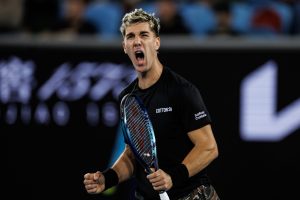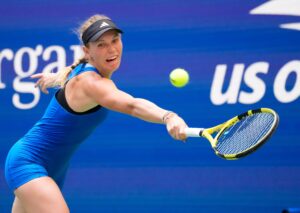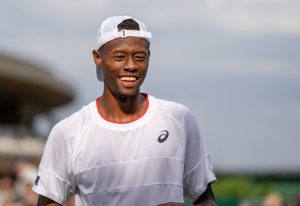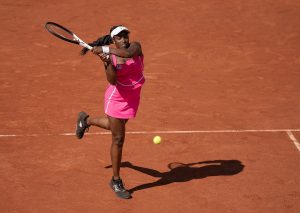Since 2011, Rafael Nadal has made the quarterfinals or better at Wimbledon just a single time. During that same period, he’s also gone onto contend in four Australian Open finals, win six more Roland Garros titles, and take two US Opens home.
Every year we always hear the same thing on the grass, however, about how a lower ranked player played “the match of his life” to beat the Spaniard at Wimbledon. With many tipping Nick Kyrgios to upset the 18-time Grand Slam champion at Wimbledon once again, the truth is, it’s more down to Rafael Nadal than anyone else.
Nadal’s losses
Let’s quickly take a look at Nadal’s losses at the most prestigious event in tennis these past seven years:
2012 – R2 loss to Lukas Rosol (Ranked #100)
2013 – R1 loss to Steve Darcis (Ranked #135)
2014 – R4 loss to Nick Kyrgios (Ranked #144)
2015 – R2 loss to Dustin Brown (Ranked #102)
2017 – R4 loss to Gilles Muller (Ranked #26)
2018 – SF loss to Novak Djokovic (Ranked #21)
Four of these six losses have been to players ranked #100 or lower. Now consider in that same time span, the three best players on grass these past ten years–Novak Djokovic, Roger Federer and Andy Murray–have just two losses before the quarterfinals combined. That surely has to make one wonder how it’s always the case that Rafael Nadal seemingly gets players that show up for the big occasion.
One reason is Rafael Nadal’s passive style of tennis. On the clay, there’s no doubt such a gamestyle does wonders. He’s able to grind pretty much every player to a standstill, waiting for unforced errors or moving them around the court to create an opening. It’s how he’s won a staggering 12 Roland Garros titles. The issue is, he adopts that same style on grass. He’s done that for a majority of his career, and for the most part it’s failed massively in recent years.
Even when he was successful on the grass of SW19, this issue existed. In 2006, he found himself two sets to one down against Robert Kendric–ranked outside the top 200–in R2. In 2007, he went to a fifth set with Robin Soderling, and also trailed two sets to love down to Mikhail Youzhny. He was also close to going two sets to one down to Latvian Ernests Gulbis in 2008. Even during his two best Wimbledon runs these past 10 years, he found himself two sets to one down twice in his 2010 title run and in serious trouble against Robin Soderling again. In 2011, he faced similar issues against Andy Murray and Mardy Fish.
Back then, though, he used to find a way to win. While his passive style of groundstrokes still allowed players to dictate play against him, a majority of the time he would keep contending for as long as possible, tiring his opponents out to a level where his usual gamestyle would be most effective. The main reason I believe he used to do this a lot better back then compared to the last seven or so years is simple–his return of serve.
The Nadal Return
If you look at the two-time Wimbledon champion’s game, it’s evident on grass his biggest weakness is his return of serve. When you consider his three biggest rivals are all arguably the three best returners ever on the surface, it only makes the Spaniard’s weakness even more magnified. Looking back at the list of losses, here are the points won on first serve by the winning players:
2012 – 83%
2013 – 74%
2014 – 83%
2015 – 77%
2017 – 80%
2018 – 76%
There’s no doubt some of those winning players have big serves, but for almost all to hit at least near the 80s in first serve points won is usually only going to end one way for the World #2. By struggling to even get balls back into play, it reduces his chance of doing what he does best, out-rallying and out-maneuvering opponents. On the grass, it gives his opponents an easy out. As long as they serve decently, they know they’ll hold their own more often than not, letting them attack the Spaniard’s serve freely, which you’ve no doubt seen happen many times over the years.
Without question, Nadal should be at a high in confidence after winning his last two events in both Rome and Paris, but these two weeks at Wimbledon will be tough, like always. His return will get exposed again, and there’s not too much he can do about it. When he does get into rallies it’s another story, though. Instead of letting his opponents dictate, if he is to go far this year with a draw featuring the likes of big hitters Jo-Wilfried Tsonga and former finalist Marin Cilic, he needs to at least be aggressive off the ground where possible.
We’ve all seen Nadal play aggressive before, even on grass. Just look at last year’s Wimbledon quarterfinals and semifinals. He may have ultimately lost, but he pushed Novak Djokovic to the brink. If he played passive tennis, the match wouldn’t have lasted more than a few hours.
It’s all about a matter of execution now. Regardless of how good others can be, though, against almost everyone not named Novak Djokovic, Rafael Nadal still dictates his own fate, even at Wimbledon.






